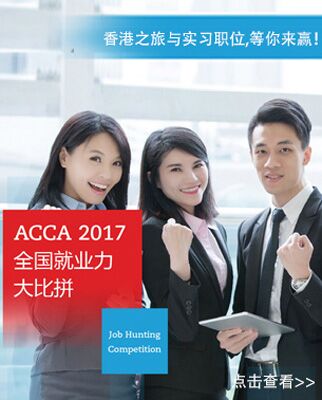ACCA F6 Exam Tips December 2017 Session given below are just intelligent guesses from exam point of view provided by famous tuition providers. These exam tips must not be relied on totally. To increase chances of success in Exams you must prepare full breadth of syllabus and topics
ACCA F6 Exam Tips December 2017:
ACCA F6 Exam Tips December 2017 session are given below by famous tuition providers
Kaplan
Make sure you read the tax rates and allowances in the exam. You may find they prompt you to remember things. For example, as high emission cars only receive a 8% WDA for capital allowances it may remind you that high emission leased cars with CO2 of > 130g/km have a restriction in taxed adjusted profit computations of 15%.
The badge of trade to determine if someone is self employed can be remembered using the mnemonic SOFIRM and FAST:
Subject matter of the transaction
Ownership period
Frequency of the transactions
Improvements and marketing
Reasons for sale
Motive (profit)
Finance
Acquisition (method of)
Similar transactions
Bpp
In section A there will be a wide range of topics tested as the examiner has to set 15 OTs. We would expect at least a couple of these OTs to be devoted to the administration of income tax and corporation tax. So candidates should ensure they are comfortable with the following:
Due dates for the payment of income tax (including payments on account)
Due dates for the payment of corporation tax (including instalments for large companies)
Filing dates for the income tax and corporation tax returns
Penalties and interest for late payments and returns
Also likely for the OT section of the exam are the following:
VAT rules on registration, impairment loss (bad debt) relief, and the SME schemes relating to cash accounting, annual accounting and flat-rate schemes
Inheritance tax due on lifetime transfers both in the donor’s life and on death
Statutory residence tests for individuals
Identification of groups of companies for corporation tax loss reliefs and gains
Trading loss reliefs for both companies and sole traders
It is important to remember that section A offers the F6 examining team an opportunity to test THE WHOLE SYLLABUS so practicing on ALL KINDS OF F6 questions from the practice and revision kit will help build and complement your existing knowledge.
In section B of the exam the questions will be similar to those of section A but there will be a longer scenario to deal with than in section A questions. This means a slightly different exam skill is necessary as you have more information to deal with and each OT will require you to find the relevant information or data in that scenario. It is not a difficult skill but we would hope you have had time to practice an extensive range of section B questions from the practice and revision kit before attempting the real exam.
In section C you will face the longer, constructed response questions with scenarios and much more open requirements. Your answers will need, not just sound technical knowledge, but also that knowledge will need to be relevant to the question you have been asked. Furthermore your answer will have to be presented logically so the marker can follow your thought processes.
At least 50% of your revision time has to be spent answering the section C questions in the practice and revision kit to build up confidence and speed in a way that will also maximise marks.
Remember to learn your income tax and corporation tax proformas.
Calculations which require no more than two or three entries into your calculator can be included on the face of your proformas (eg. Grossing up dividends/interest). Calculations which are more complex (eg. Company car benefits) need separate workings which are properly referenced (W1, W2 etc and with a heading).
Actually attempt the narrative parts of the requirement – aim for as many sentences as there are marks with each sentence containing something technical. Keep your paragraphs to no more than 3 sentences long (4 at an absolute maximum).
In both numerical and narrative answers leave plenty of space on the page. So in proformas – leave a gap between each line (you will definitely need to add something in). In narrative answers leave a line or two between each paragraph just in case you remember something later. Well-spaced answers are also easier to mark – and you ALWAYS WANT TO KEEP YOUR MARKER HAPPY.
We know that the two longest questions will focus on income tax and corporation tax. This is likely to include the following.
Employment benefits
Property income
Relief for pension contributions
Adjustments to profit to arrive at trading income for both companies and sole traders – in past sitting we have seen a number of questions whereby you have to correct errors in computations included in the scenario
Capital allowance computations
It is also likely that section C will include a ten mark question on VAT, inheritance tax or capital gains tax. So remember to cover the whole syllabus in the practice and revision kit.
Finally, remember the pass mark is 50% you don’t need to be perfect. If you don’t know something have a guess and move on. Sometimes you have to do that in order to get follow through marks in section C questions. If you make a mistake but then have to use that incorrect figure later on in a subsequent calculation then that’s fine you can only lose the mark once. In section A and B never leave an OT unanswered, have a guess if need be.
LSBF
Section A
The 15 MCQ questions will cover a broad range of the syllabus.
This section typically contains questions regarding tax compliance and self-assessment e.g. time limits for submission of information and payment of tax including penalties for non-compliance; residence rules.
Section B
Q16 – Q20 (10 marks)
Chargeable gains
Company making disposals including sale of shares, takeovers, insurance rollover relief, rollover or holder relief; calculating the chargeable gain and corporation tax. OR
Capital gains tax question – calculating gains made by an individual on disposals of residential property versus disposals of non-residential assets e.g. shares with some disposals qualifying for ER, gift relief, PPR/ letting relief.
Part disposals and chattel rules.
Due date for payment and for making any elections.
Q21 – Q25 (10 marks)
VAT
VAT registration
Calculation of VAT payable, tax point, bad debts, special schemes, overseas aspects of VAT, VAT group
Errors and default surcharge scheme
Q26 – Q30 (10 marks)
Inheritance tax
Calculating IHT on lifetime gifts made into trust when the donor is alive.
Calculating IHT on donor’s death (i.e. on lifetime gifts made in the prior 7 years and on the death estate).
Advantages of making lifetime gifts over death gifts e.g. taper relief, lifetime exemptions such as the annual exemption, marriage exemption, small gifts relief normal expenditure out of income.
Unused NRB between spouses
Remember diminution in value principle used to value gifts of unquoted shares and land.
Payment of IHT – by who/ by when
Section C
Q31 (10 marks)
Tax planning question e.g. whether an individual should operate as a sole trader or trade via a company, how profits from a company should be extracted (salary versus dividends), looking at the tax planning opportunities available to married couples etc.
Q32 (15 marks)
Income tax
Adjustment of profit or loss for a sole trader or partnership starting to trade (opening year rules) or ceasing to trade (closing year rules).
Calculating income tax payable, with trading income, interest income and dividend income, property income, tax-free income and perhaps employment income. Remember the savings income and dividend income nil rate bands when calculating the income tax liability.
Personal allowance rules
Tax relief for gift aid donations and/or personal pension contribution
Annual allowance (tapered) in relation to the maximum pension contributions that qualify for tax relief.
Q33 (15 marks)
Corporation tax
Adjustment of profit, including deducting the allowable element of lease premium and calculating / deducting capital allowances; calculating interest receivable.
Property business income for a company.
Corporation tax implications of companies belonging to a 75% loss group and/or implications of a company having 51% subsidiaries.
Calculating corporation tax for a large company and instalment payments.





